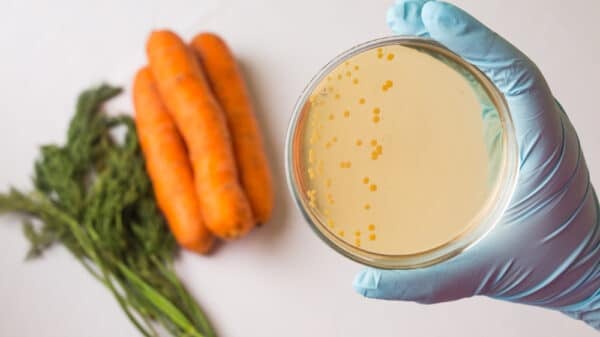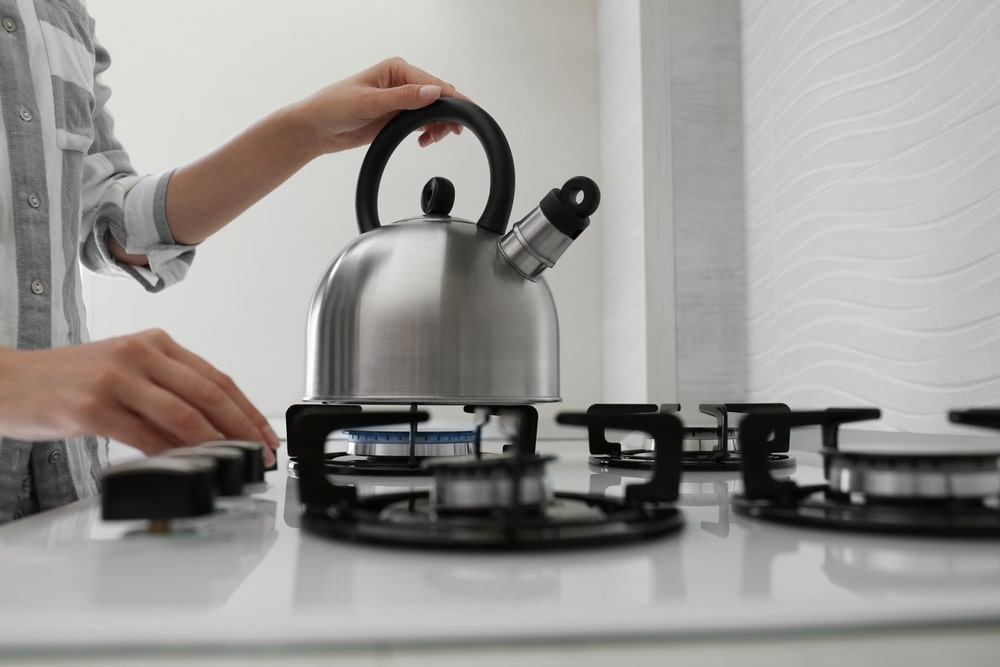our health on a broader scale. The emissions from gas stoves can contribute to climate-related issues like worsening air quality, extreme weather events, and a rise in respiratory ailments. This means, while they may not be immediately harmful at the levels normally emitted, their long-term effects ripple outwards to affect us all.
As Bill Hayes pointed out, “While carbon dioxide and methane won’t immediately make you feel unwell, their roles as greenhouse gases can escalate climate change, which can ultimately lead to more respiratory problems and heat-related illnesses.” It’s a stark reminder that the things we often brush off as minor inconveniences can have a lasting impact on our wellbeing and the environment.
3. Nitrogen Oxides (NOx)
Nitrogen oxides, produced by burning gas, can lead to respiratory issues like asthma and can aggravate existing conditions. “Exposure to nitrogen oxides can diminish lung function and increase respiratory infections,” Hayes notes. If you or someone in your household suffers from asthma or other respiratory issues, these ordinary kitchen appliances may be further complicating your health.
Jackson emphasizes the broader implications of this: “One of our most surprising findings was that pollutant concentrations we measured from gas and propane stoves lead to dangerous levels for hours even after stoves are off—not just in kitchens but in bedrooms down the hall.” These pollutants don’t just disappear when the meal is over. They linger, affecting not just your cooking space but your entire home environment.
Improving Indoor Air Quality When Using Gas Stoves
So, what can you do if a gas stove is part of your kitchen equipment? You might be wondering how to balance your cooking needs with concerns about air quality. While making a switch to electric or induction stoves may be a long-term goal for some, there are several immediate actions you can take to improve indoor air quality right now.
**1. Ventilation is Key:** When cooking, ensure your kitchen is well-ventilated. Open windows, and use exhaust fans that vent outside. This will help whisk away smoke and pollutants while also minimizing any lingering odors from your culinary creations. Remember, just opening a window can make a significant difference!
**2. Regular Maintenance:** If you must use a gas stove, keep it well-maintained. Regularly check for leaks and have your appliance serviced as needed. Sometimes, a small investment in maintenance can go a long way in safeguarding your home’s air quality.
**3. Use Air Purifiers:** Invest in a good air purifier with a HEPA filter. This can help filter out small particles and other pollutants that sneek into your indoor environment. You’ll be surprised at how fresh your home can feel once you start filtering the air!
**4. Be Mindful of What You Burn:** Aside from just reducing the use of the stove, think about the materials you might be using on it. Opt for chemical-free cleaning products and avoid burning anything that isn’t food, as these can emit additional unhealthy fumes.
**5. Monitor Carbon Monoxide Levels:** Consider investing in a carbon monoxide detector for your home. These devices can alert you to potentially dangerous concentrations of CO, which is essential for keeping your household safe. It’s a small step that can ensure peace of mind.
Overall, being aware of the potential risks associated with gas stoves isn’t about instilling fear—it’s about promoting informed decisions for better health and air quality in your home. With a little vigilance and some proactive measures, you can create an environment that’s not just livable, but truly healthy. Remember, every good meal is better when enjoyed in a space that feels safe and clean.the *American Journal of Respiratory and Critical Care Medicine* found that even short-term exposure to nitrogen dioxide can lead to significant respiratory issues, especially in children. This is a stark reminder of how everyday actions in our kitchens, such as whipping up a simple meal, could be putting our loved ones, particularly the youngest members of our households, at risk.
It’s important to connect the dots here. When we fire up that gas stove for dinner, we’re not just preparing a meal; we’re also contributing to air quality issues that could affect our health. For families living in small apartments, where kitchen space is limited and ventilation may not be ideal, the stakes can be even higher. The reality is that a significant number of children are facing health challenges directly tied to gas stove usage—a concern that weighs heavy on any parent’s heart.
Moving on to the broader implications of cooking methods in our homes, one cannot ignore the enormous health risks posed by another unseen villain lurking in our kitchens—Volatile Organic Compounds (VOCs). While you might not see these harmful chemicals drifting through the air, their presence can still wreak havoc on our bodies. Exposure to compounds like benzene, which can be emitted from gas stoves, has been shown to lead to a range of health problems, from headaches to potentially life-threatening illnesses like cancer.
Do you remember the last time you battled a nagging headache or felt nauseated while cooking? Have you ever thought it might be more than just the aroma of your culinary creations? The air in our homes, especially during meal prep, can indeed become a toxic cocktail. The European Union has set strict standards for the air quality regarding many of these emissions, but here in the U.S., those standards are not always met in our homes. It leaves us with this unsettling dilemma: are we truly aware of what we’re breathing in while we cook?
Next, let’s discuss Particulate Matter (PM)—the fine particles in the air that, even in smaller quantities, can have devastating health impacts. It’s sobering to realize that simple cooking processes can kick up enough PM to significantly affect indoor air quality. This is particularly concerning for vulnerable populations: children, the elderly, and those with pre-existing health conditions. If you’re a parent, the thought of your child breathing in anything that could lead to asthma or other respiratory issues is terrifying.
The research speaks for itself, with data showing how cooking styles and appliances contribute to higher PM levels indoors, affecting the very air that fills your family’s lungs. Cooking with gas, in particular, can lead to significantly elevated levels of PM in the home environment, especially when frying or using high heat.
Now, let’s not forget about methane, a gas that, while often discussed in terms of its environmental impact, is none too friendly to our homes either. With climate change at the forefront of many discussions today, it’s no surprise that methane’s potency as a greenhouse gas—over 80 times that of carbon dioxide over a short time—is alarming. But the concern doesn’t end there. Household methane emissions can also impact indoor air quality, further contributing to health risks.
As we navigate our daily lives, it’s crucial to recognize the complex web of pollutants that could be lurking in our kitchens. Gas stoves, while seemingly harmless and a staple in many homes, are like ticking time bombs of health risks—often overlooked yet dangerously present. You deserve to enjoy your home and your cooking without the looming threat of health issues.
In an age where we have access to extensive information at our fingertips, understanding how cooking methods impact our health is pivotal. It’s not just about feeding our families; it’s about nurturing them in a safe, clean environment. So, if you’re feeling overwhelmed by potential indoor pollutants or unsure of how to create a healthier cooking experience, know that you’re not alone. Many are asking these important questions—let’s make informed choices together.Recent research highlights a pressing health concern: the air quality in our homes may be compromised by the use of gas stoves, which release harmful pollutants that can exacerbate respiratory issues, particularly for children. An epidemiological study revealed that every increase of 5 parts per billion (ppb) in nitrogen dioxide (NO2) can significantly worsen asthma severity, especially when levels exceed a threshold of 6 ppb. On top of that, a meta-analysis from 2013 found that for every additional 15 ppb of nitrogen dioxide exposure, there was a staggering 15 percent increase in wheezing among children. It’s crucial to understand that while this data primarily focuses on childhood asthma, the implications extend to adults and even our beloved pets in the household as they, too, can be affected by these indoor air pollutants.
**The Risks of Gas Stove Emissions**
A Stanford study led by researcher Jackson revealed alarming findings: in poorly ventilated kitchens, gas ranges can surpass the national nitrogen dioxide standard within mere minutes of being turned on. Even more concerning, this study uncovered methane leaks in all 53 homes that participated, even when the gas stoves weren’t in use. In fact, over 75 percent of these emissions transpire when the stove is off, reflecting a worrying trend regardless of the stove’s make or age.
Hayes, a key voice in the research, stresses that with proper installation and maintenance, natural gas should leak minimally or not at all. This brings to light the importance of thorough routine inspections and cleaning of stove components at least once a year—though the specifics can differ from model to model. Regular maintenance becomes all the more crucial if you notice any odd sounds or signs of malfunction from your stove.
One of the most startling revelations from Jackson’s study was that dangerous concentrations of pollutants lingered long after cooking had stopped. The research found that harmful levels of benzene from gas stoves remained elevated for hours, impacting not just kitchens but also bedrooms and other areas further away. This is important to note because certain pollutants, especially particulate matter, can cling to fabrics. This means even your sofa or favorite throw pillows may hold on to harmful particles, releasing them back into the air when disturbed. While some gaseous pollutants dissipate more quickly, the sheer variety of toxic substances emitted during cooking is indeed alarming.
**Three Practical Methods to Minimize Health Risks from Gas Stoves**
If the statistics regarding the health risks associated with gas stoves have left you feeling uneasy, fret not. There are effective steps you can take to reduce these risks in your own home.
**1. Ensure Adequate Ventilation**
Ventilating your kitchen properly is vital when using a gas stove. Make it a habit to turn on your range hood vent while cooking. Surprisingly, research shows that less than a third of people utilize their range hoods effectively, with many providing only mediocre pollution control. For optimal performance, make sure your vent system is venting air outdoors rather than just recirculating it back into your kitchen—a common setup that fails to filter out harmful gases like nitrogen oxides. Keeping your range hood clean and maintaining the filters every three to six months can make a significant difference.
If you lack a good range hood, simple alternatives can improve air circulation. You can open windows, employ HEPA filters, or position a box fan to usher in fresh air and reduce pollutant concentration. However, it’s essential to remember that while these methods can improve air quality, they can’t entirely eliminate harmful gases. Therefore, it’s best to keep an air purifier or fan running for at least one to two hours post-cooking, especially since pollutants can linger for hours after you’ve finished your meal. And while dealing with any lingering particles on your clothes is a concern, it’s probably not necessary to change your clothes every time you cook.
**2. Explore Alternative Cooking Methods**
Consider incorporating more gas-free cooking appliances into your routine. Using an electric kettle for boiling water or opting for slow cookers, rice cookers, or air fryers can diminish your gas consumption significantly. For those looking to eliminate nitrogen oxide pollution altogether, the most effective step is to replace your gas stove with an induction or electric model. Although this transition may seem daunting from a cost perspective, programs like the Inflation Reduction Act offer rebates to help offset expenses.
If a full replacement isn’t feasible, don’t overlook portable induction cooktops. These affordable solutions are a fantastic way to prepare quick, delicious meals while giving your main stove a break.
**3. Cook Smarter with Gas**
Being conscious of the recipes you prepare can also make a big difference. Certain cooking methods inherently produce higher levels of indoor pollutants. For instance, longer baking times required for items like cakes or deep-frying often increase emissions significantly. In contrast, shorter cooking techniques—like quick stir-fries or simple egg dishes—not only save you time but also help minimize gas usage and subsequent pollution.
Taking these steps can feel overwhelming, but integrating them into your cooking routine can significantly improve the air quality in your home, making it a healthier space for you and your loved ones. Just remember, you aren’t alone in navigating these challenges; awareness is the first step toward creating a better environment for all who dwell under your roof.
































